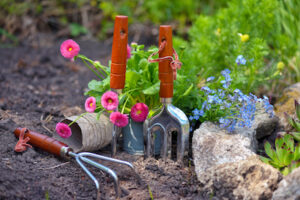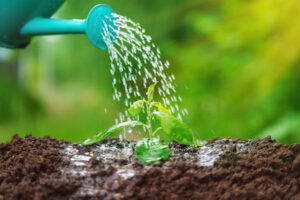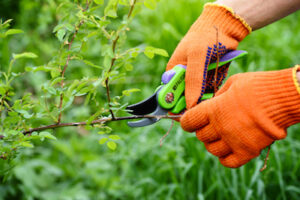How to Keep Your Garden Healthy
A healthy garden is a thriving, vibrant, and beautiful space that provides relaxation, beauty, and even food for the table. However, maintaining a garden that is both attractive and healthy can be a challenge for even the most experienced gardener. So, how do you keep your home’s garden healthy?
There are a few things to do so that you can keep your home’s garden healthy. Some of these things include soil health, proper watering, mulching, pest management, pruning, fertilizing, proper planting, weed control, and regular maintenance, you can enjoy a beautiful, bountiful garden all season long.
In this blog post, we will discuss several essential tips for keeping your garden in top shape throughout the year.

1. Choose the Right Plants for Your Region and Climate
One of the most critical factors in maintaining a healthy garden is choosing the appropriate plants for your area. It’s essential to select plants that are well-suited to your region’s climate, as well as your specific garden conditions. For example, the crepe myrtle is a popular choice in many southern US gardens due to its heat and drought tolerance, as well as its stunning summer flowers. By choosing plants adapted to your local conditions, you’ll ensure that they can thrive and contribute to a healthy garden ecosystem.
2. Proper Plant Spacing
Plant spacing is another critical factor in maintaining a healthy garden. Overcrowded plants compete for resources, such as water, nutrients, and sunlight, leading to weaker growth and increased susceptibility to pests and diseases. On the other hand, plants spaced too far apart can leave bare patches that are not only unsightly but also provide an opportunity for weeds to take hold. To determine the appropriate spacing for your plants, consult seed packets, nursery labels, or gardening books for specific recommendations. Be sure to also plant your plants at the proper depth and with proper soil amendments to give them the best chance for success.
Also, most plants need at least six hours of direct sunlight per day to thrive, so it’s essential to choose the right location for your garden so that it stays healthy. If you have a shaded area in your yard, consider planting shade-loving plants, such as ferns.
3. Soil Health is Key
The foundation of a healthy garden is healthy soil. A well-balanced soil provides the essential nutrients, water, and air that plants need to grow strong and healthy. So it’s essential to ensure that your soil is healthy and fertile. Start by testing your soil to determine its pH level and nutrient content. You can purchase a soil testing kit at your local gardening store or have your soil tested by a professional. Once you know what your soil needs, you can amend it with organic matter, such as compost, to improve its health and fertility. To maintain and improve soil health, consider the following:
- Test your soil: Regular soil testing can help you determine your soil’s nutrient levels and pH, allowing you to make informed decisions about amendments and fertilizers.
- Add organic matter: Incorporate compost, aged manure, or other organic materials into your soil to improve its structure, nutrient content, and water-holding capacity.
- Practice crop rotation: Rotating your crops can help prevent the buildup of pests and diseases, as well as improve soil fertility.
4. Water Wisely
Watering is critical to the health of your plants. Most plants need at least one inch of water per week, either from rainfall or irrigation. However, it’s important not to overwater your plants, as this can lead to root rot and other problems. To ensure proper watering, water your plants deeply and infrequently, rather than giving them frequent, shallow watering. This will encourage deeper root growth and help your plants become more drought-resistant.
Proper watering is essential for a healthy garden, as both overwatering and underwatering can lead to stressed plants that are more susceptible to pests and diseases. Here are some tips to ensure that your plants receive the right amount of water:
- Water deeply: Encourage deep root growth by watering thoroughly, allowing the water to penetrate the soil to a depth of at least six inches.
- Use drip irrigation or soaker hoses: These methods deliver water directly to the root zone, reducing evaporation and minimizing water waste.
- Water in the early morning or late afternoon: Watering at these times helps to reduce evaporation and ensure that your plants have access to the moisture they need during the hottest part of the day.

5. Mulching
Mulching is another essential step in keeping your garden healthy. Mulch helps to retain moisture in the soil, suppress weeds, and regulate soil temperature. Organic mulch, such as shredded leaves, straw, or bark, can also improve soil fertility as it decomposes. Apply a two to three-inch layer of mulch around the base of your plants, being careful not to cover the stems or foliage.
6. Pruning
Pruning is another essential aspect of maintaining a healthy garden. Pruning helps to promote healthy growth, remove dead or diseased plant material, and control the size and shape of your plants. Different plants require different pruning techniques, so be sure to research the specific needs of your plants before pruning.
7. Fertilizing
Fertilizing is an essential step in ensuring that your plants have the nutrients they need to grow and thrive. However, it’s important not to over-fertilize your plants, as this can lead to nutrient burn and other problems. Start by testing your soil to determine its nutrient content, and then choose a fertilizer that matches your plant’s needs. Organic fertilizers, such as compost, are an excellent choice, as they provide a slow release of nutrients that won’t burn your plants.
8. Weed Control
Weeds can quickly take over your garden, stealing nutrients and water from your plants. It’s important to keep weeds under control by removing them promptly and using a weed barrier or mulch to prevent new weeds from growing. Avoid using chemical weed killers, which can harm beneficial insects and other wildlife.
9. Pest Management
Pests can quickly wreak havoc on your garden, so it’s essential to have a plan in place for managing them. One of the most effective ways to control pests is to practice good garden hygiene. This means removing dead or diseased plants promptly, cleaning up fallen leaves and debris, and avoiding overwatering, which can create conditions that favor pests. You can also use natural pest control methods, such as companion planting, beneficial insects, and organic pest control products.
10. Regular Maintenance
Regular maintenance is essential to keeping your garden healthy. This includes tasks such as deadheading, removing dead or diseased plant material, and keeping your garden clean and tidy. Regular maintenance can help prevent disease and pest problems and keep your garden looking beautiful all season long.

In Closing
In conclusion, maintaining a healthy garden takes time and effort, but the rewards are well worth it. By following these tips for soil health, proper watering, mulching, pest management, pruning, fertilizing, proper planting, weed control, and regular maintenance, you can enjoy a beautiful, bountiful garden all season long. Remember that keeping your garden healthy is a rewarding and ongoing process that requires attention to detail, patience, and dedication. Have fun watching your garden thrive! Thanks for reading!
